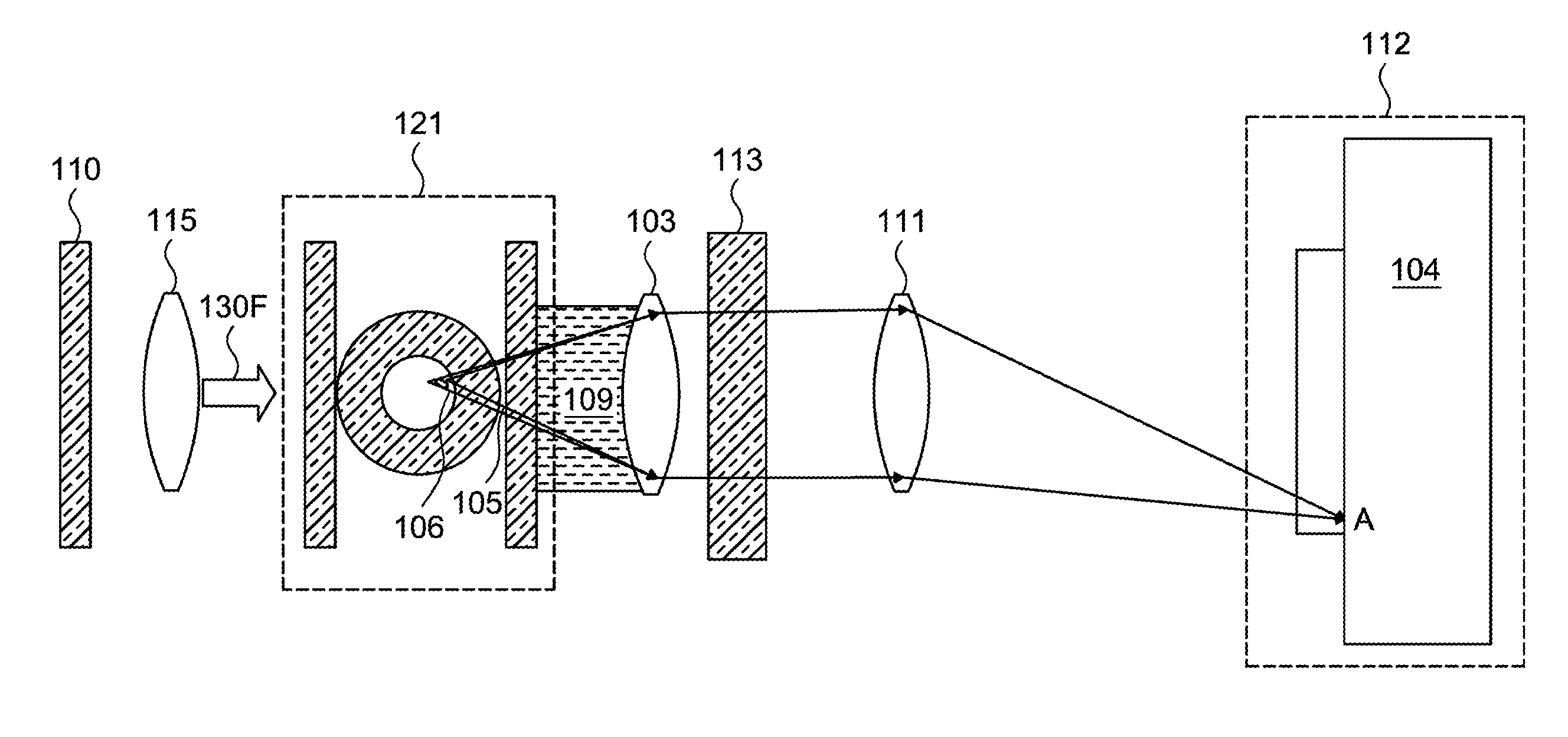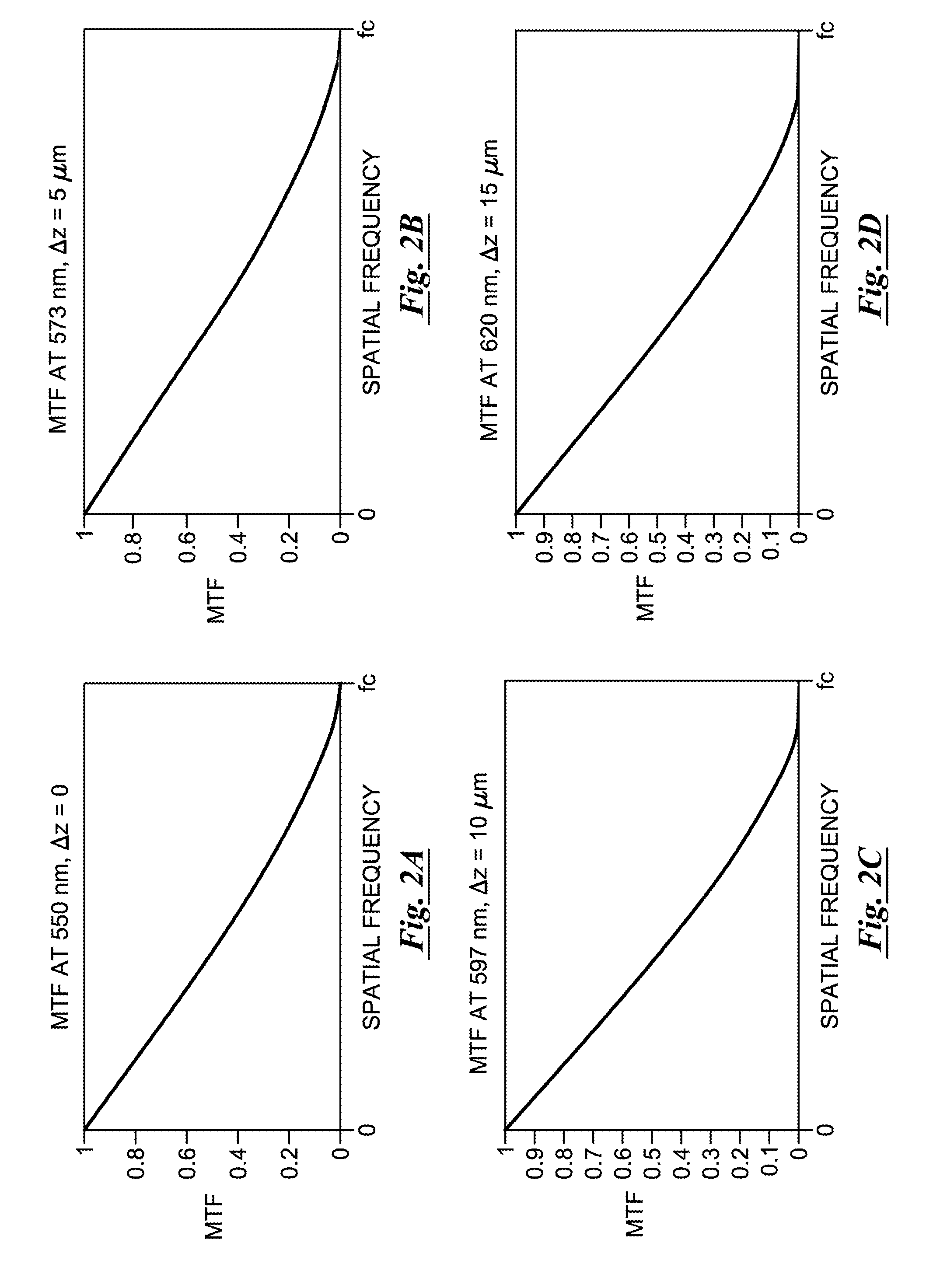Depth of field extension for optical tomography
a technology of optical tomography and depth of field, applied in the field of optical projection tomography, can solve the problem of limited speed of the focal plane moving through the specimen
- Summary
- Abstract
- Description
- Claims
- Application Information
AI Technical Summary
Benefits of technology
Problems solved by technology
Method used
Image
Examples
example 1
[0052]One example of a hyperchromatic objective lens 103, suitable for use in a hyperchromatic system, is depicted in FIG. 1. This compound lens comprises eight optical elements 1-8 of which optical elements 1 and are cemented together to form a first doublet, and optical elements 3 and 4 are cemented together to form a second doublet, 5 and 6 are cemented together to form a third doublet, and 7 and 8 are cemented together to form a fourth doublet. The first surface of 1 is flat or slightly convex, so as to avoid trapping air in a cavity when this surface comes in contact with an immersion liquid such as oil or water. An example prescription for the objective 103 follows.
[0053]
MaterialFront RadiusBack RadiusCenter(Schottof Curvatureof CurvatureThicknessElementdesignation)(mm)(mm)(mm)1SF57200−3.173.54LAK143.17−5.925.08Air——13KZFSN4104.5−6.553.644SF66.55−13.771Air——15SF6410.736.274.756LASF40−6.274.477.88Air——2.247SK27.23−3.959.058F23.9519.378.83
The location of the aperture stop may be...
PUM
 Login to View More
Login to View More Abstract
Description
Claims
Application Information
 Login to View More
Login to View More - R&D
- Intellectual Property
- Life Sciences
- Materials
- Tech Scout
- Unparalleled Data Quality
- Higher Quality Content
- 60% Fewer Hallucinations
Browse by: Latest US Patents, China's latest patents, Technical Efficacy Thesaurus, Application Domain, Technology Topic, Popular Technical Reports.
© 2025 PatSnap. All rights reserved.Legal|Privacy policy|Modern Slavery Act Transparency Statement|Sitemap|About US| Contact US: help@patsnap.com



